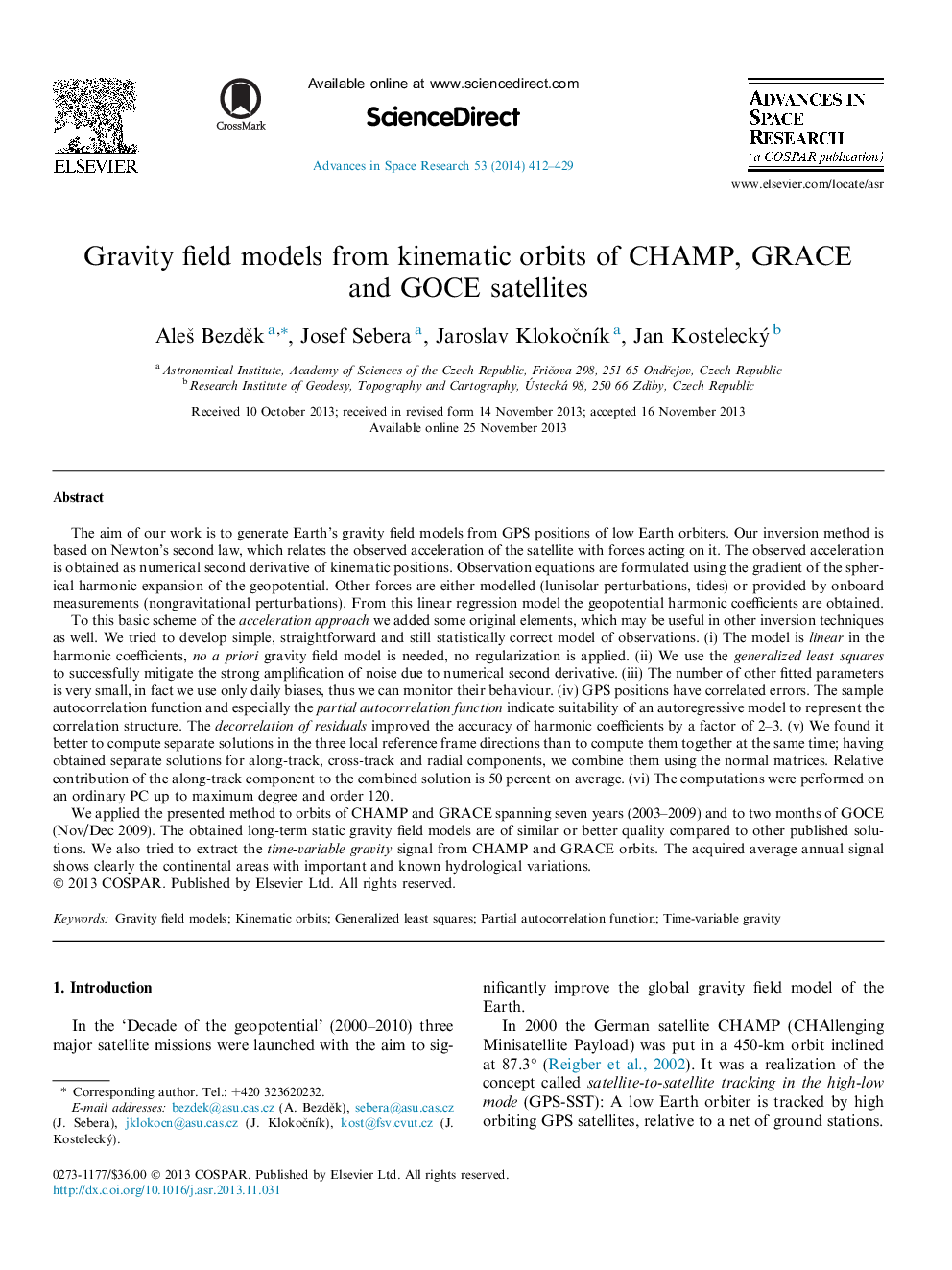| Article ID | Journal | Published Year | Pages | File Type |
|---|---|---|---|---|
| 1764330 | Advances in Space Research | 2014 | 18 Pages |
•Linear regression model with double decorrelation to produce realistic error bars.•No a priori gravity model used, no regularization.•Static gravity fields of similar/better quality compared to other published solutions.•Average seasonal time-variable gravity from CHAMP and GRACE.•Gravity field solutions including covariance matrices available for download.
The aim of our work is to generate Earth’s gravity field models from GPS positions of low Earth orbiters. Our inversion method is based on Newton’s second law, which relates the observed acceleration of the satellite with forces acting on it. The observed acceleration is obtained as numerical second derivative of kinematic positions. Observation equations are formulated using the gradient of the spherical harmonic expansion of the geopotential. Other forces are either modelled (lunisolar perturbations, tides) or provided by onboard measurements (nongravitational perturbations). From this linear regression model the geopotential harmonic coefficients are obtained.To this basic scheme of the acceleration approach we added some original elements, which may be useful in other inversion techniques as well. We tried to develop simple, straightforward and still statistically correct model of observations. (i) The model is linear in the harmonic coefficients, no a priori gravity field model is needed, no regularization is applied. (ii) We use the generalized least squares to successfully mitigate the strong amplification of noise due to numerical second derivative. (iii) The number of other fitted parameters is very small, in fact we use only daily biases, thus we can monitor their behaviour. (iv) GPS positions have correlated errors. The sample autocorrelation function and especially the partial autocorrelation function indicate suitability of an autoregressive model to represent the correlation structure. The decorrelation of residuals improved the accuracy of harmonic coefficients by a factor of 2–3. (v) We found it better to compute separate solutions in the three local reference frame directions than to compute them together at the same time; having obtained separate solutions for along-track, cross-track and radial components, we combine them using the normal matrices. Relative contribution of the along-track component to the combined solution is 50 percent on average. (vi) The computations were performed on an ordinary PC up to maximum degree and order 120.We applied the presented method to orbits of CHAMP and GRACE spanning seven years (2003–2009) and to two months of GOCE (Nov/Dec 2009). The obtained long-term static gravity field models are of similar or better quality compared to other published solutions. We also tried to extract the time-variable gravity signal from CHAMP and GRACE orbits. The acquired average annual signal shows clearly the continental areas with important and known hydrological variations.
